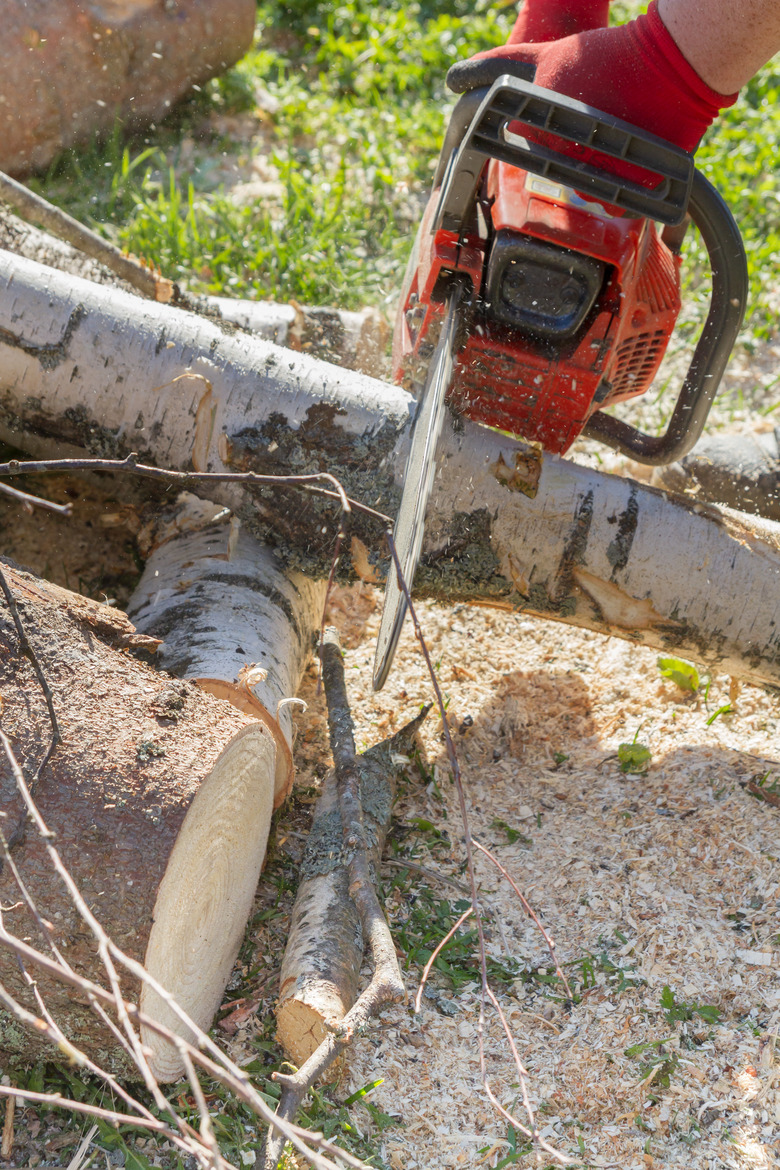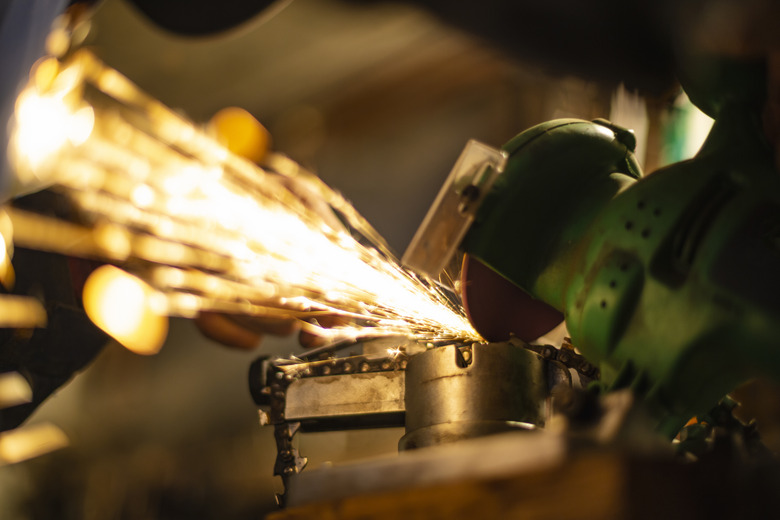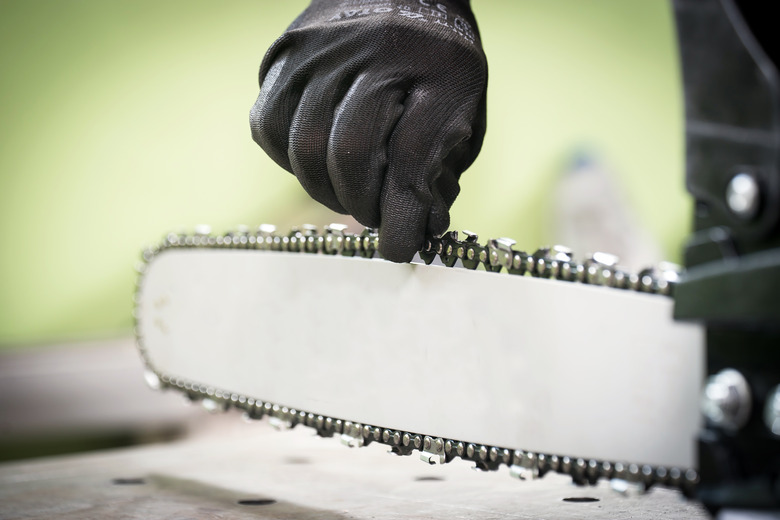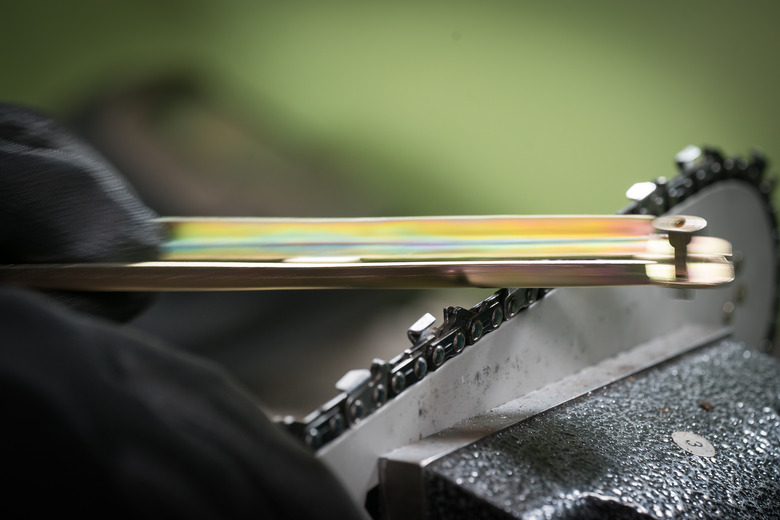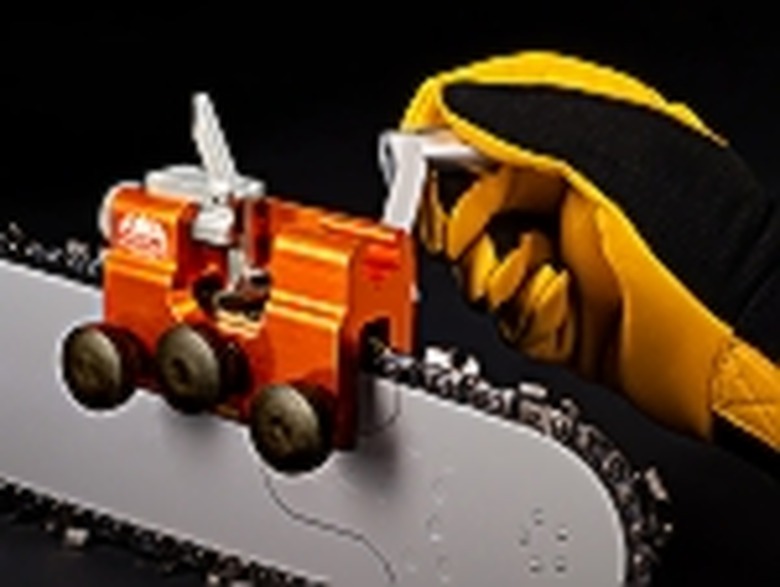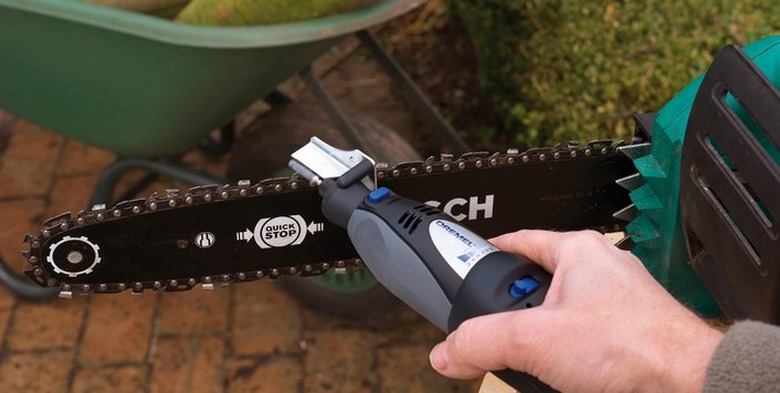How To Sharpen A Chain Saw
Chain saws do their work through the action of a series of sharp cutters attached to the links on the chain that rotates around the tool's bar. Unless the cutters on a chain saw chain are kept sharp, the saw simply won't do its job correcty and can even become dangerous. When the cutters are dull, the chain rides the top of the wood instead of biting into it, and you find yourself pushing down on the saw to force it through the cut. The saw motor works harder, you get tired more easily, and the chances of kickback increase dramatically.
Pros recommend sharpening the chain every time you add fuel. Some people keep extra chains around and simply swap chains when the one they are using gets dull, then they take the dull chains to the hardware store for sharpening. This practice wastes time, because it often takes a week for the store technicians to get around to your chain; and it's an unnecessary expense, because you can sharpen the cutters yourself.
When Does the Chain Need Sharpening?
When Does the Chain Need Sharpening?
Chain saws are designed to cut wood and only wood, so any time the chain contacts anything other than wood, such as the ground or a embedded nail, the cutters lose their edge and need sharpening. The cutters also dull quickly when cutting particularly hard types of wood, such as oak, maple or madrone. A few telltale signs alert you to the need for sharpening the chain:
- The saw doesn't cut well and you have to exert force to get it to do its job
- The wood smokes while you're cutting
- The saw produces dust instead of wood chips when it cuts
The goal of sharpening is to restore the edges on the cutters, which are the concave "teeth" spaced regularly along the chain. You can do this using a round file or a grinding wheel. The concept is simple: Draw the file at the angle of the cutter bevel, which is usually between 30 and 35 degrees, or set a grinding wheel to that angle to hone the steel to a sharp edge. The job can be complicated by several factors:
- If there are a large number of cutters angled in one direction on a chain, so the job is repetitive
- If there are an equally large number angled in the opposite direction, which makes the job doubly repetitive
- If the cutters are honed unequally, so the chain is unbalanced and fails to cut well
- If the depth gauges between cutters aren't properly filed so that the saw doesn't' cut deeply enough
If you work regularly with a chain saw, you might consider purchasing a benchtop chain sharpener, which is similar to a power miter saw. To use it, clamp the chain saw bar—with the dull chain installed on it and properly tensioned —to the grinder table, set the angle of the grinder, and lower the it to grind each cutter as you advance the chain with your free hand. This type of sharpener doesn't work for every chain, though. Moreover, it's expensive, and you can't bring it with you on jobs, so it's good to know how to sharpen a chain the old-fashioned way—with a file and a guide.
How to Sharpen a Chain Using a File
How to Sharpen a Chain Using a File
You can use a round file to sharpen the cutters on a chain, provided the diameter of the file matches that of the cutters. Common diameters are 5/32, 3/16 and 7/32 inches. Alhough these increments sound very small, they are crucial. If you use a file that's too large, you'll flatten the cutters; and if the diameter is too small, you won't sharpen them completely. One link on the chain usually identifies the manufacturer and model number, and you can use that information to look up the recommended file size.
Filing angle is just as important as file diameter, and the chain smanufacturer also specifies this. Common filing angles are 30 and 35 degrees. If the angle is too steep or not steep enough, you'll flatten the edges of the cutters instead of sharpening them. You usually set the file angle by using a guide, which straddles the chain at the correct angle and prevents the file from digging too deeply into the metal.
Things Needed
-
Rag
-
Screwdriver
-
Felt tip marker
-
Round file
-
Cutter filing guide
-
Flat file
-
Depth gauge filing guide
1. Prepare the Chain for Sharpening
Turn off the saw and set the chain brake. If you have an electric model, unplug it or remove the battery. Clean grease and oil off the bar with a rag. Use a screwdriver to tension the chain to a normal working tension, making sure you can advance the chain with your fingers. Set the saw on a flat surface and release the brake.
Tip
To prevent the saw from tipping, you might want to secure the bar in a vise. If you're working outdoors, an easy way to support the saw is to gut a groove in a stump and let the bar rest in the groove.
2. Mark the First Cutter
Use a felt tip marker to color the first cutter you sharpen. It's important to do this so you don't lose track of the cutters and file some of them twice as you advance the chain. The chain may have a reference link that's already colored. If so, start sharpening at that link.
3. Sharpen All the Cutters Beveled in the Same Direction
Insert the file into the guide and set the guide against the bar so the file extends through the concave portion of the cutter at the proper angle. Draw the file a few times all the way, from one end to the other, to hone the edge. Count the number of strokes and use the same number on each cutter as you advance the chain.
4. Sharpen the Cutters Beveled in the Opposite Direction
Turn the saw around or readjust your position to face the bar from the opposite side. Bevel all the cutters facing in the opposite direction.
5. File Down the Depth Gauges
Use a flat file and depth gauge filing guide to file down the depth gauges if they protrude above the cutters. The guide is designed to straddle the chain and allow the fin-shaped depth gauge to stick through a slot in the middle. Use the same number of strokes on each fin (usually from 3 to 5).
Tip
You don't have to file the depth gauges as often as you do the cutters. Do so only when it's obvious the fins are too high.
Tools that Make the Job Easier
Tools that Make the Job Easier
The Timberline Chainsaw Sharpener makes cutter sharpening a breeze. It straddles the chain and clamps to the bar, allowing the chain to advance freely when it's in position. You adjust the chain so a cutter is positioned in the middle of the slot, slide the file into position and rotate the file using the attached handle. After turning a fixed number of times, retract the file and advance the chaing to file the next cutter. This tool allows you to insert the file from two directions so you can file opposite-beveled cutters without changing your position or moving the saw.
If you have a rotary tool, you can purchase a chainsaw-sharpening attachment for it. This attachment includes a cylindrical grinder and a guide set to the proper grinding angle. You insert it into the rotary tool in the same way you insert any other attachment. It's best to use a variable-speed rotary tools and run it at a slow speed so you can count the rotations and grind each cutter by the same amount.
